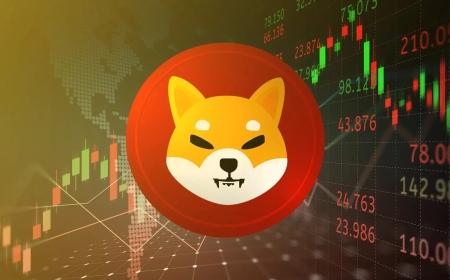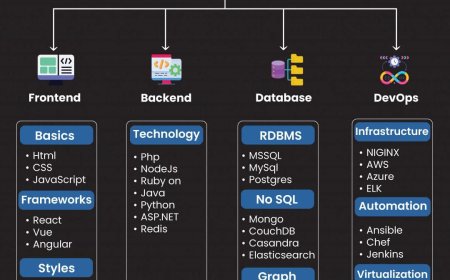The Rise of Influencer Culture in South Asia
Discover the rise of influencer culture in South Asia and how it’s reshaping marketing, branding, and consumer behavior in the region.

Once considered a Western phenomenon, influencer culture has now taken firm root in South Asia.
From Bollywood stars to local TikTok creators, influencers in the region are redefining how brands connect with consumers. With smartphones in every pocket and social media being the go-to space for entertainment and shopping, the rise of influencers in countries like India, Bangladesh, Pakistan, and Nepal has been nothing short of explosive.
But why is this movement growing so fastand what can brands, marketers, and even small business owners learn from it?
Lets explore how South Asia is building its own influencer ecosystem and why it matters more than ever.
1. Why South Asia Is Fertile Ground for Influencers
South Asia has one of the worlds youngest and most connected populations.
With a combined population of over 1.9 billion and internet penetration increasing every year, platforms like Instagram, TikTok, YouTube, and Facebook are part of daily life. More importantly, there's a growing appetite for local, relatable content that speaks the native languageboth literally and culturally.
The regions diversity also creates space for niche influencers: beauty vloggers, mom bloggers, fitness coaches, student creators, foodies, and even comediansall of whom are finding loyal followings.
This digital boom is reshaping not just entertainment but how consumers discover and trust brands.
2. From Celebrities to Micro-Influencers
Gone are the days when only celebrities drove trends.
Now, micro and nano influencerspeople with 1,000 to 50,000 followersare often more trusted and effective than A-list stars. Why? Because theyre relatable. They reply to comments, share behind-the-scenes content, and have a more intimate connection with their followers.
South Asian brands are catching on. Instead of spending huge budgets on a single celebrity endorsement, theyre spreading their reach across multiple local influencers to tap into different communities.
In Nepal, this shift has been especially clear, with local creators playing a central role in product launches, brand awareness campaigns, and even political movements.
3. TikTok: The Game Changer
If theres one platform thats redefined influencer culture in South Asia, its TikTok.
TikToks short-form, algorithm-driven format has democratized fame. A teenager in rural India or a dancer from Pokhara can go viral overnight with the right clip. This accessibility has made TikTok the most inclusive influencer platform in the region.
Brands now collaborate with creators on everything from unboxings and product reviews to dance challenges and hashtag campaigns. Whats key here is creativity, not perfection.
Even small businesses have realized that you dont need to be a marketing proyou just need to tell a story that resonates.
4. The Business of Being an Influencer
Influencing is no longer just a hobby. It's a career path.
Many South Asian influencers are turning content creation into full-time income through brand deals, affiliate marketing, digital products, and YouTube monetization. Influencer agencies are popping up across the region, offering services like brand matchmaking, campaign management, and analytics.
In Nepal, theres a growing ecosystem of workshops, online courses, and content creator hubs that support aspiring influencers.
For businesses, this means the opportunity to work with professionally-managed creators who understand how to deliver real valuenot just views.
5. Authenticity Wins Every Time
Consumers are getting smarterand more skeptical.
They can tell when an influencer is genuinely excited about a product vs. just doing it for a paycheck. Thats why successful campaigns in South Asia lean heavily into authenticity.
Brands that allow influencers creative freedomrather than handing them rigid scriptssee higher engagement and better conversions.
A great example of this can be found in influencer marketing in Nepal, where creators often blend humor, storytelling, and cultural references to connect deeply with their audience.
6. Regional Language and Local Culture Matter
The key to standing out in South Asias influencer space? Speak the local language.
Influencers who create content in Hindi, Bengali, Nepali, Tamil, Urdu, or regional dialects consistently outperform their English-only peers in engagement and reach. Its about relatability. People want to see themselves in the content they consume.
Likewise, influencers often tap into local festivals, traditions, and issues to stay culturally relevant and emotionally connected.
Lesson for brands: Local is powerful. The more native your campaigns feel, the more theyll resonate.
7. Challenges Facing the Influencer Ecosystem
While the growth is impressive, influencer culture in South Asia still faces hurdles.
Theres a lack of transparency in pricing, unclear advertising regulations, and concerns around fake followers or engagement fraud. Many creators still struggle with platform algorithm changes that can wipe out their reach overnight.
Brands, too, are learning to vet influencers more carefullylooking beyond follower counts to engagement rates, content quality, and audience demographics.
The silver lining? These challenges are pushing the industry to become more professional and data-driven.
8. The Future: Influencers as Entrepreneurs
The next chapter of South Asian influencer culture isnt just brand dealsits brand building.
Many top creators are launching their own products, digital courses, or even ecommerce stores. They're turning their personal brands into business empires.
In Nepal and across the region, influencers are opening cafes, starting fashion lines, and launching digital startupsall powered by their online communities.
This shift shows the real power of influence: not just selling someone elses product, but building your own movement.
Final Thoughts: South Asias Digital Voice Has Arrived
Influencer culture in South Asia isnt just a trendits a transformation.
Its changing how people consume content, how brands market themselves, and how individuals build careers in the digital age.
Whether you're a marketer looking to build authentic campaigns or a creator hoping to grow your platform, now is the time to lean into the rise of influence.
South Asia is speakingand the world is starting to listen.

































